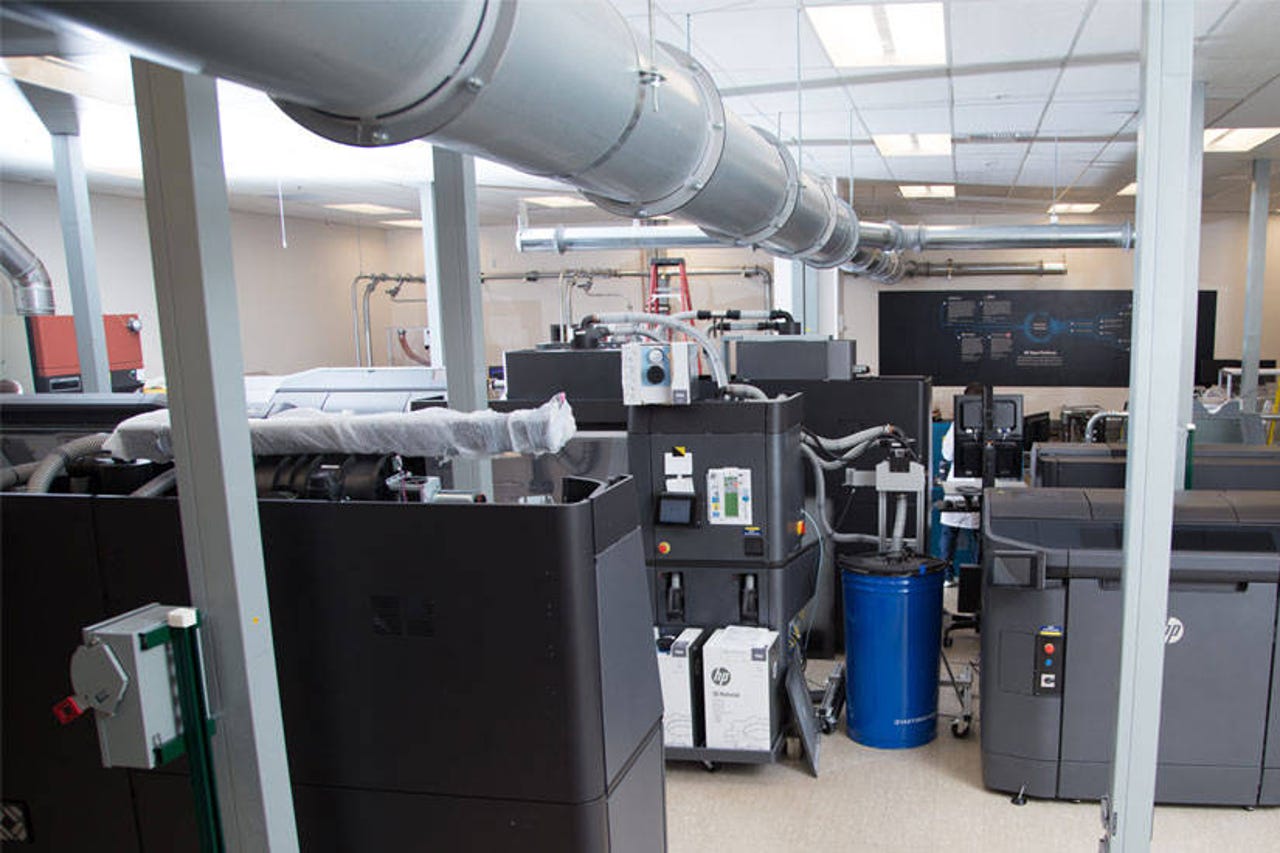HP opens lab for testing new 3D-printing materials


HP 3D Open Materials Development Lab
In a bid to strengthen its presence in the additive manufacturing industry, HP has officially opened its new 3D Open Materials and Applications Lab at its Corvallis, Oregon site this week.
The 3,500 square-foot lab will be used by HP and its partners to test new, powdered raw materials for use in HP's 3D printers, and get real-time feedback from engineers.
Featured
"In order for 3D printing to go mainstream, you need the materials piece to take off with the technology, or the ecosystem won't flourish," said Tim Weber, global head of 3D Materials and Advanced Applications and general manager of the Corvallis site. "We want materials companies to work with their customers and drive innovation on our platform."
In a blog post, HP said its Jet Fusion technology, which was announced in October 2014 and launched 18 months later, could "transform color, texture, and mechanical properties at the 'voxel' level".
"Manipulating printing materials could create 3D-printed objects with conductivity, flexibility, embedded data, and translucency -- and that's just the beginning," HP stated.
However, the printing giant acknowledged that partnerships are key to making the most of its Jet Fusion 3D-printing technology.
HP said it is currently working with materials companies including Arkema, BASF, Evonik, and Lehmann & Voss to co-develop new materials for the HP Jet Fusion 3D 4200 and HP Jet Fusion 3D 3200 printers. It's also looking for other partners to come on board.
HP Multi Jet Fusion process test bed
"The ability to create new materials more quickly, and to easily iterate and improve those materials, will lower costs and accelerate the digital reinvention of manufacturing," Weber said.
"There's no way that HP itself can develop and certify the some 30,000 materials made by all the materials companies in the world.
"Working together in a hands-on, agile development environment enables us to test and certify materials that are compatible with our Multi Jet Fusion technology."
HP's long-term vision is to provide a materials platform that provides an app store-like experience where customers have a range of certified materials to choose from, the company said.
While materials are a key component of HP's 3D-printing vision, Weber noted that the bigger challenge is "changing more than 70 years of entrenched business practices and behaviour in the manufacturing industry".
"We must rethink the entire lifecycle of a manufactured part, from design to delivery," he said.